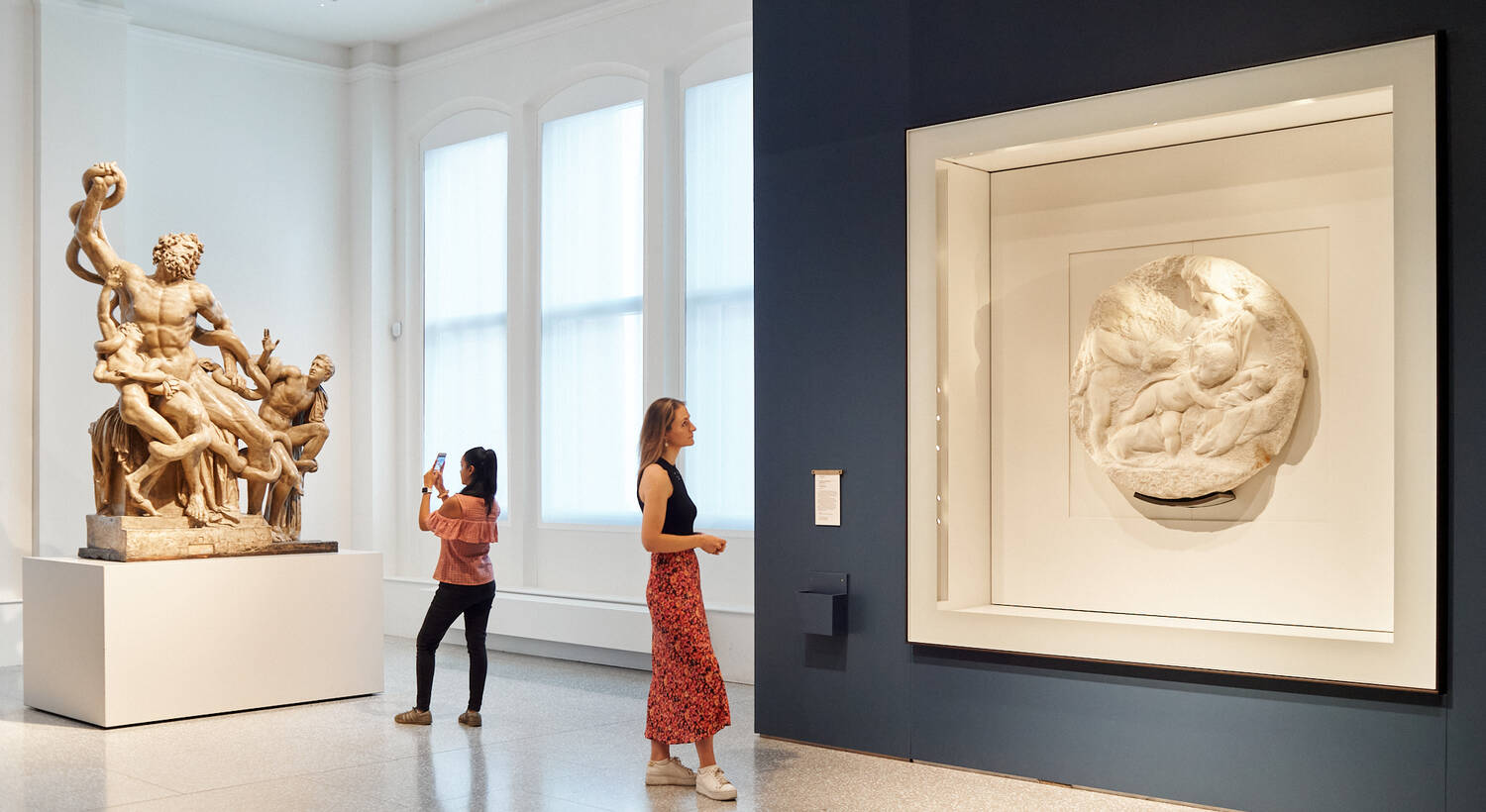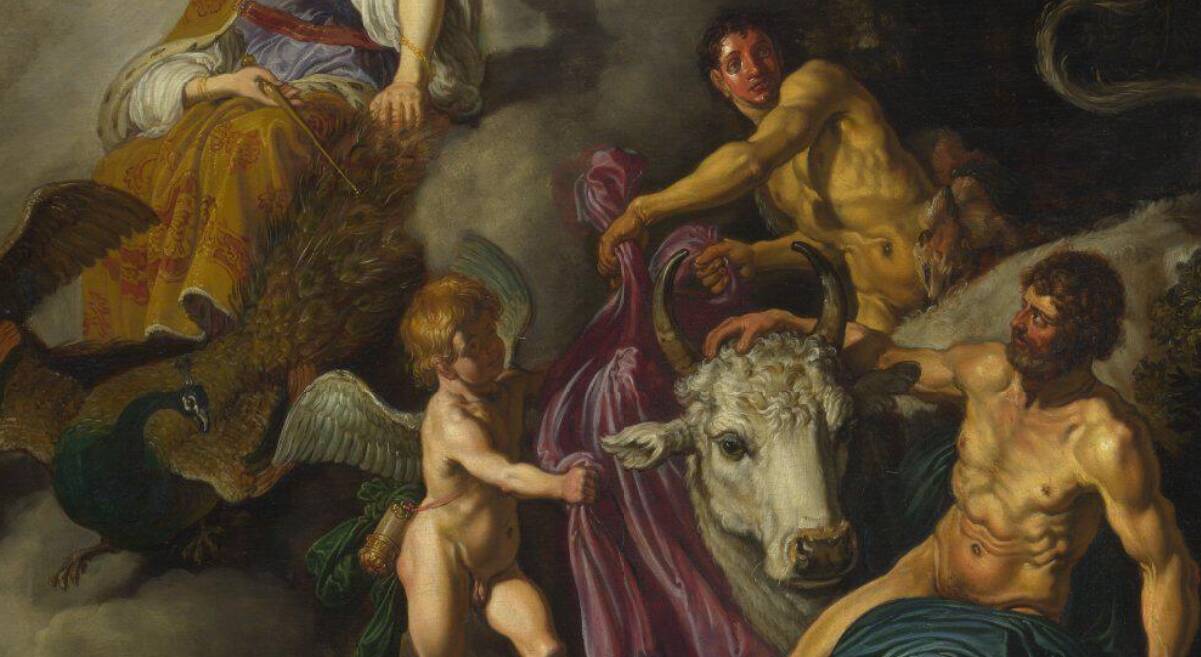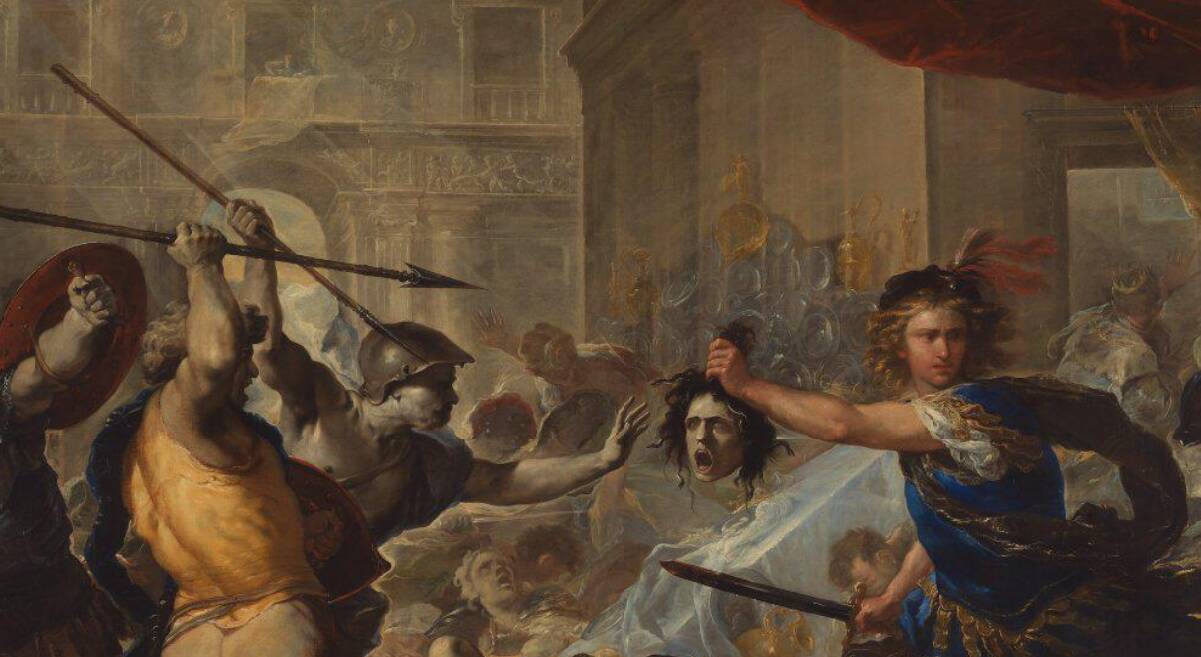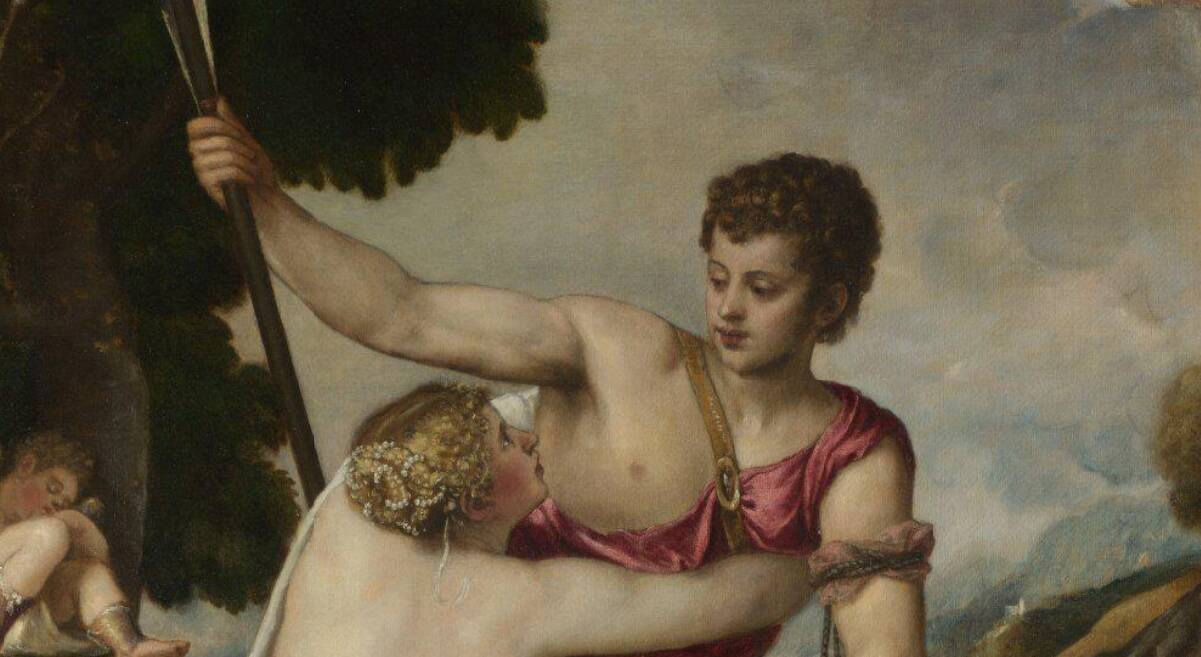
Explore artworks inspired by Greek Mythology
Yinka Ilori's Piccadilly Circus takeover takes inspiration from Greek Mythology, see how Greek mythology has influenced some of the other artworks across London's West End
Back to ItineriesLondon’s West End isn’t just about theatres and lively streets—it’s also home to a rich collection of art inspired by ancient Greek mythology.
As Yinka Ilori’s new Pegasus inspired public art installation ‘Good Things Come to Those Who Wait’ launches in London’s West End from 20-25 August, we’ve done a deep dive into some other Greek mythology inspired artworks in the West End.
Royal Academy of Arts
© Justine Trickett, 2022
Cast of the Farnese Hercules (c. 1790)
This striking cast of Hercules was created for the Royal Academy around 1790. It’s a replica of the famous Farnese Hercules sculpture, which originally stood in the Baths of Caracalla in Rome.
The statue shows Hercules resting after his labours, symbolised by the lion skin draped over his club. Based on a 3rd-century Roman marble by Glycon, itself a copy of a Greek original by Lysippus from the 4th century BC, this cast became a centrepiece of the Royal Academy’s collection in 1796.
Cast Corridor, RA Schools, 2024. Photo: © David Parry / Royal Academy of Arts © Justine Trickett, 2022
Venus de Milo, 19th century
This plaster replica of the famous Venus de Milo brings a piece of ancient Greece to London. The original statue was discovered on the Greek island of Melos in 1820 and quickly became one of the Louvre’s most famous pieces.
While there is some debate about the artist behind the original Venus de Milo, this replica has a storied history, including being prominently displayed at the Crystal Palace in London.
© Justine Trickett, 2022
Cast of Laocoön and his Sons
This dramatic plaster cast captures the agony of Laocoön, the Trojan priest who, according to myth, was killed by sea serpents sent by Poseidon.
The original sculpture, created between the 1st century BC and early 1st century AD, was unearthed in Rome in 1506 and became one of the most celebrated statues of its time. The Royal Academy’s cast likely dates from when the statue was in Paris during the Napoleonic Wars.
Cast of Belvedere Torso
Admired by artists like Michelangelo, the Belvedere Torso is a powerful and muscular statue of a seated man, likely representing Hercules.
This 18th-century cast, part of the Royal Academy’s collection, is a copy of the famous original housed in the Vatican. Despite being incomplete, the statue’s form has inspired countless artists and continues to be revered for its depiction of strength and power.
The National Gallery
© The National Gallery, London
The Judgement of Paris by Peter Paul Rubens
This painting shows a key moment in Greek mythology. Paris, a prince raised as a shepherd, must choose the most beautiful goddess: Venus, Juno, or Minerva. He gives the golden apple to Venus after she promises him the love of Helen, the most beautiful woman in the world. This decision will eventually lead to the Trojan War. In the painting, Paris’s choice is celebrated by the god Mercury, with four cherubs descending to crown Venus.
Peter Paul Rubens, The Judgement of Paris, 1632-5 © The National Gallery, London
Juno discovering Jupiter with Io by Pieter Lastman
This painting tells the story of Jupiter, who transforms Io into a cow to hide her from his wife, Juno. Lastman’s use of light and shadow adds intensity to this moment of discovery, capturing the tension between the gods.
Luca Giordano, Perseus turning Phineas and his Followers to Stone, 1660 © The National Gallery, London
Perseus turning Phineas and his Followers to Stone by Luca Giordano
Giordano’s painting vividly depicts the moment when Perseus uses the head of Medusa to turn his attackers into stone. The transformation is captured in dramatic detail, with Phineas and his followers frozen in mid-action as their flesh turns to stone.
Titian, Venus and Adonis, 1554 © The National Gallery, London
Venus and Adonis by Titian
Inspired by Ovid’s Metamorphoses, this painting shows the tender yet tragic moment when Venus tries to prevent Adonis from going on a hunt that will lead to his death. The sensuality of the scene is heightened by the beauty of Venus and the emotional exchange between the lovers.
Correggio, Venus with Mercury and Cupid ('The School of Love'), 1525 © The National Gallery, London
Venus with Mercury and Cupid by Correggio
This serene painting depicts a tender family moment with Venus, Mercury, and their son Cupid. Venus, unusually shown with wings, gazes dreamily at the viewer while Mercury teaches Cupid to read. This artwork is one half of a pair, with its companion piece representing the earthly Venus, making it a beautiful example of mythological themes in Renaissance art.













